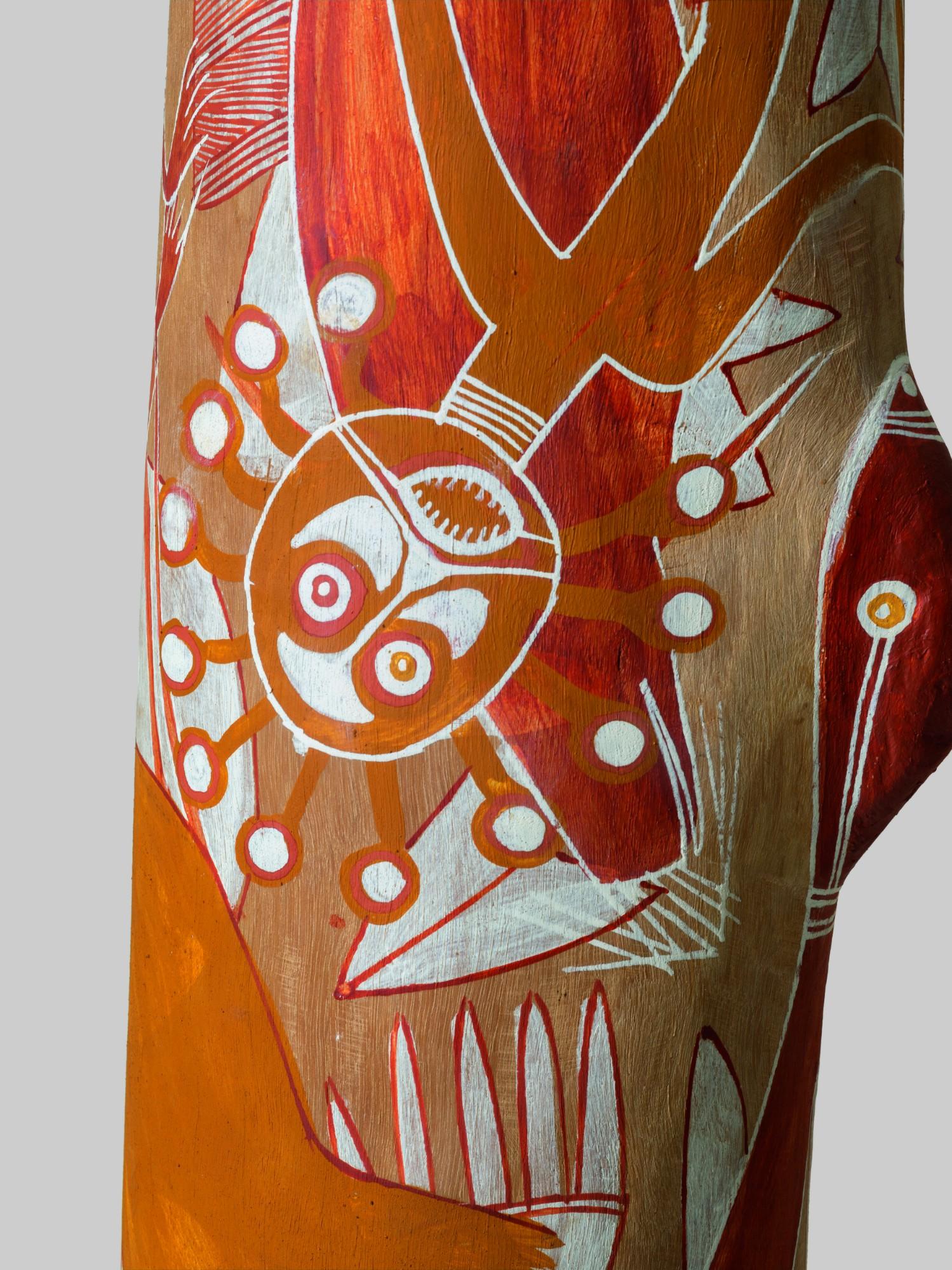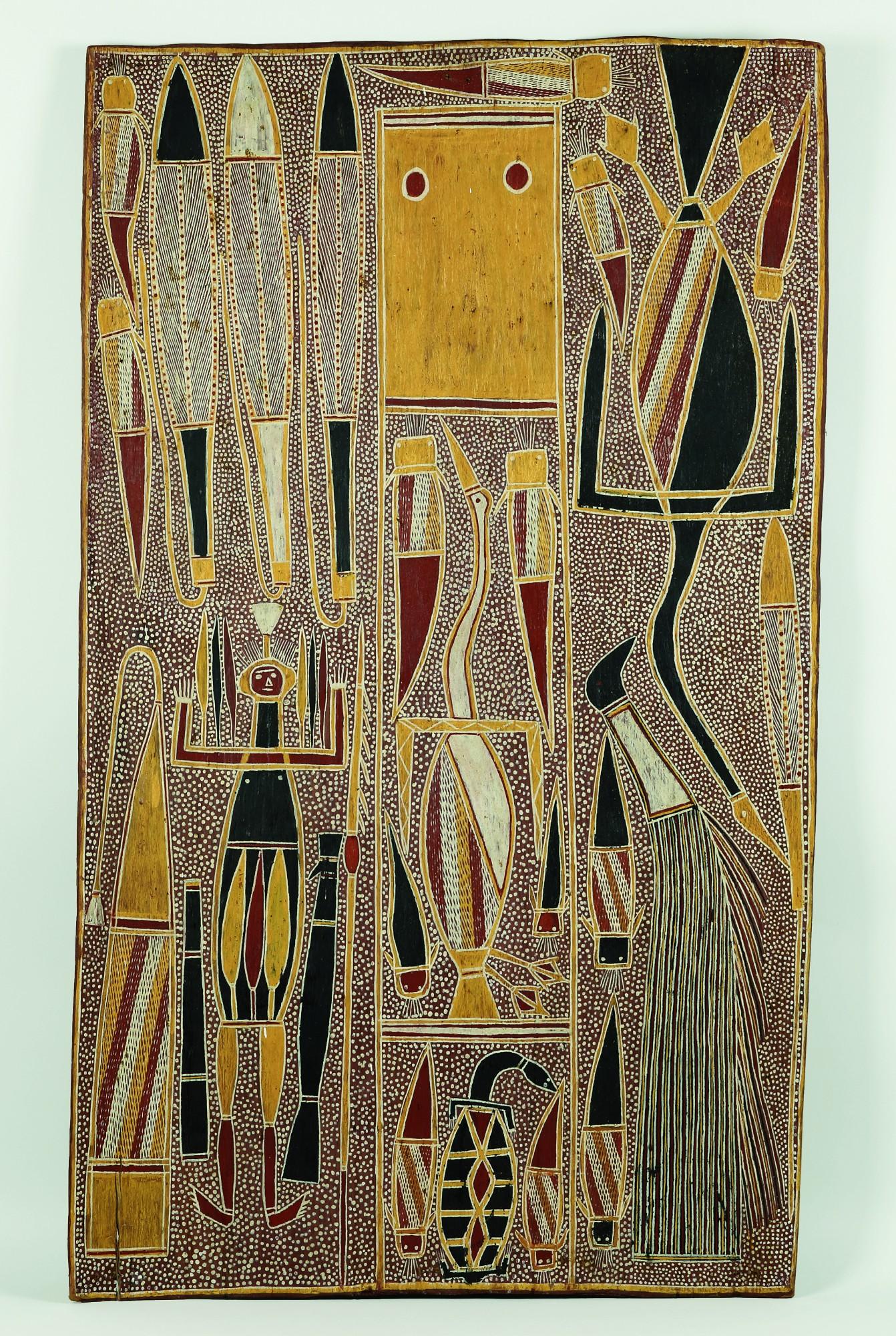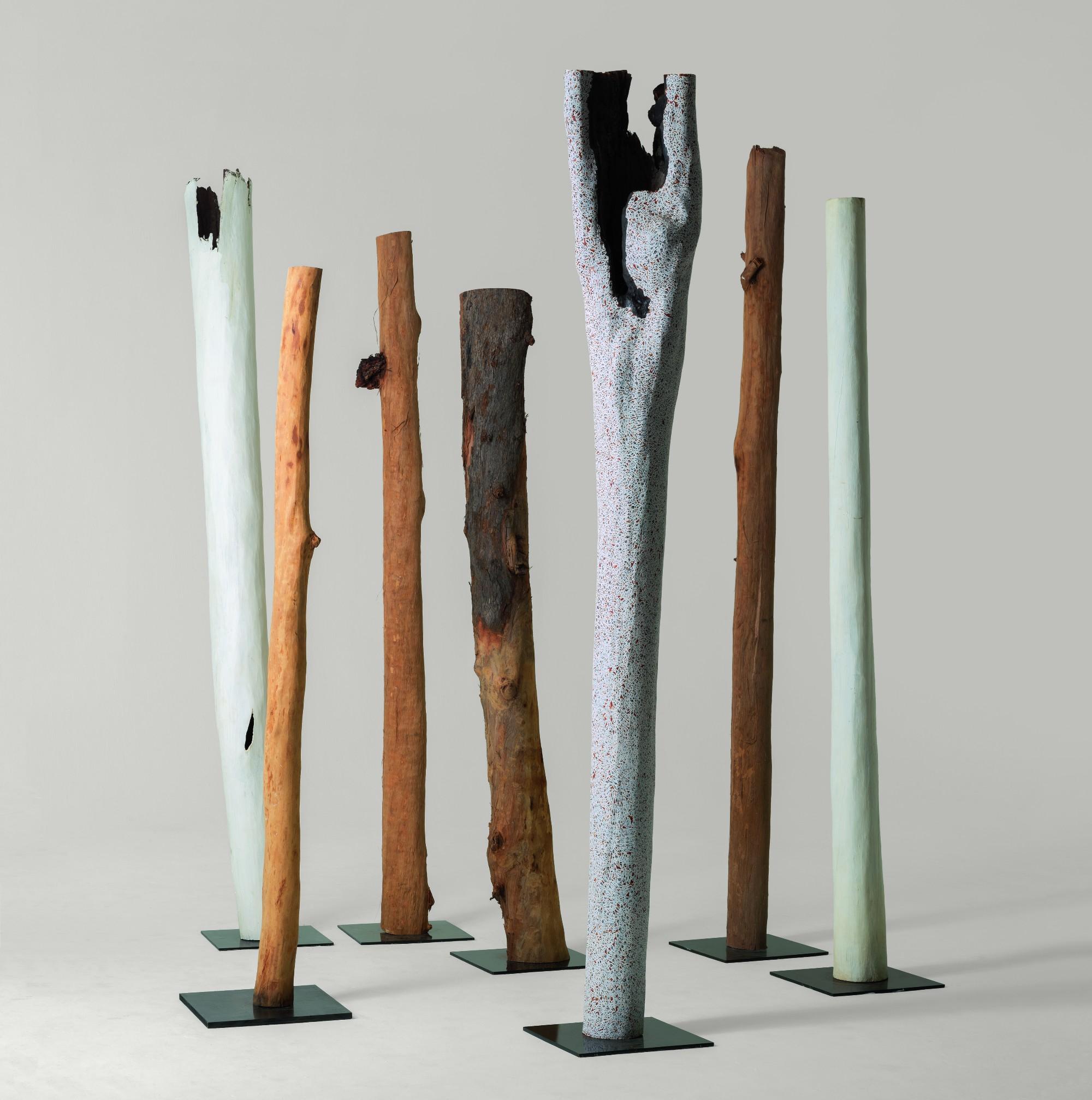The Inside World, on view at the Fralin Jan. 24-May 24, 2020, presents 112 memorial poles by 55 artists from remote Aboriginal communities in the tropical northern region of Australia known as Arnhem Land. With this collaboration, which illustrates the potential impact that partnership could have on serving students, faculty and visitors, the two museums are exploring the possibility of sharing a larger space on University Grounds in the future.
“The Inside World is an exciting opportunity for the Fralin Museum of Art and Kluge-Ruhe Aboriginal Art Collection — the only museum dedicated to Aboriginal art outside of Australia — to serve students, faculty and visitors in a new way,” said Matthew McLendon, the J. Sanford Miller Family Director at the Fralin. “By coming together in one location, we are able to present visual and academic experiences that advance new ideas and new ways to view the world.”
“Partnering with the Fralin to present Memorial Poles allows Kluge-Ruhe to support the Fralin’s recent commitment to diversity,” said Margo Smith AM, Kluge-Ruhe director. “This exhibition demonstrates how important it is to bring Kluge-Ruhe to University Grounds, creating greater access to the collection for the University and the community.”
Traditionally, memorial poles — known as lorrkkon, ḏupun or ḻarrakitj — were used to house the bones of the deceased. Interment in a memorial pole marked the final point in a long and complex funeral process designed to guide the spirit of the deceased on its final journey. It signified the moment when spirits were considered to have finally returned to their ancestral homes—when they had left all vestiges of the mundane “outside” world and become one with the “inside” realm of the ancestral world.
“Contemporary memorial poles are not ritual objects, but metaphors for the crossing of cultures: they are spirit vessels that hint at the existence of ancestral energy that permeates all things,” said Henry F. Skerritt, curator of the Indigenous Arts of Australia at Kluge-Ruhe. “The result is a celebration of life. Walking in this forest of bones, we find ourselves reborn. Faced with this joyous exploration of a culture so distant and different to our own, the world is made more alive.”
Today, these poles are made as works of art, and artists included in the exhibition are some of the most respected contemporary artists working in Australia today. These include John Mawurndjul AM, who was recently honored with a major retrospective at the Museum of Contemporary Art in Sydney and the Art Gallery of South Australia in Adelaide, and Djambawa Marawili AM, whose work has been included in the Moscow, Istanbul and Sydney Biennales. Two of the artists in the exhibition, Gabriel Maralngurra and Joe Guymala, will be traveling to Charlottesville for the exhibition opening and will offer a Saturday Special Tour on Jan. 25th at 2 p.m. with Henry Skerritt.



























